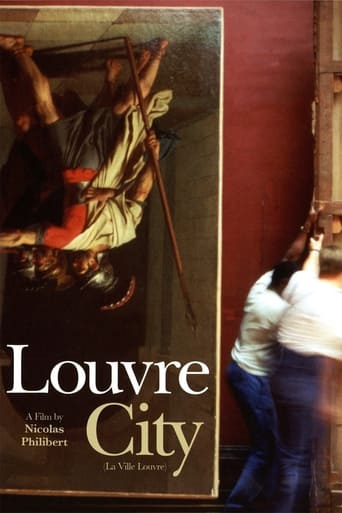guy-bellinger
Everybody knows the Louvre, one of the most important museums in the world, as well as its fabulous collections, among which its must-sees, "Mona Lisa", "Liberty Leading the People", "The Venus de Milo", "The Winged Victory of Samothrace", ... But what everybody knows about the Louvre is only (if I may put it that way)... what is open to the public or what is shown them during opening hours. This was naturally not enough for a master documentary filmmaker like Nicolas Philibert ("In the Land of the Deaf", "To Be and to Have", ...) For if he was to film the Louvre, it would mean exploring the place the way Livingstone did when in search of the Sources of the Nile River. "Louvre City" would exist only if the movie unveiled the hidden side of the museum, only if it managed to capture the life swarming in the giant beehive it houses unseen, away from the public eye whether while the visitors are present or after they have gone. And this is precisely what he did. What Philibert therefore shows us is what the lenses of his camera have surprised where and when we visitors are normally not wanted: the curator and the museum workers during picture hanging, the latter manipulating and/or moving huge pieces; employees walking miles of underground corridors bringing one piece from an office to a restoration workshop... Nothing didactic, no art history lessons given, no paintings explained. Nothing but men and women at work. Such a basic principle is quite commendable but it in no way guarantees a good movie. What it takes in fact to make such material enjoyable is a point of view. Fortunately, the director has one. Pinpointing details that are colorful, unusual or quirky, a bit like Tati did in his comedies, is the angle he has chosen: statues being transported and seeming to be moving on their own; the curator repeatedly shilly-shallying on how to arrange paintings on the walls before an exhibition; a museum attendant wearing too big a pullover to get into the jacket of his new uniform, and so on. Nicolas Philibert does possess acute observation skills and adequate editing enhances the effect. As a result boredom is not on the agenda. On the contrary: all the funny details pinpointed, an attention-holding score by Philippe Hersant and the pleasure to be shown what normally remains concealed do make "Louvre City" a pleasant (and informative) entertainment.

